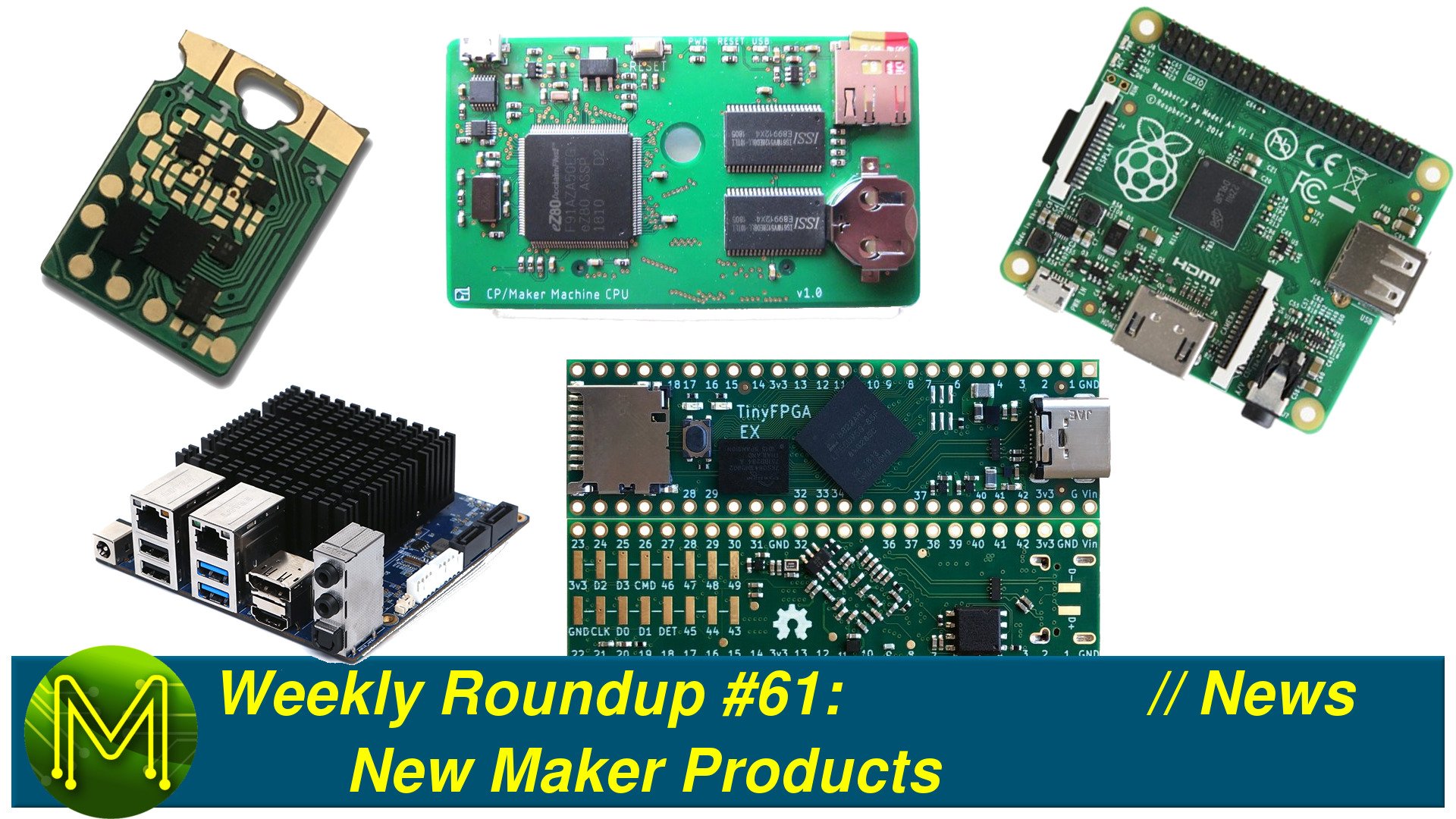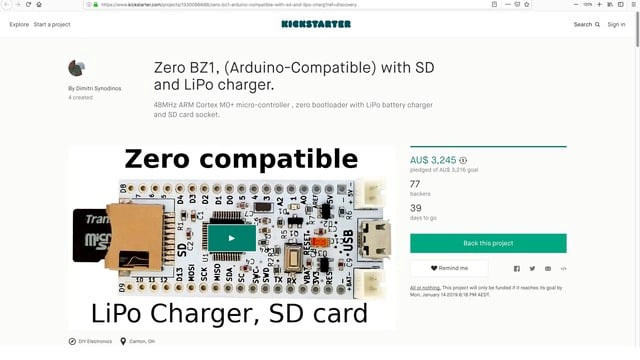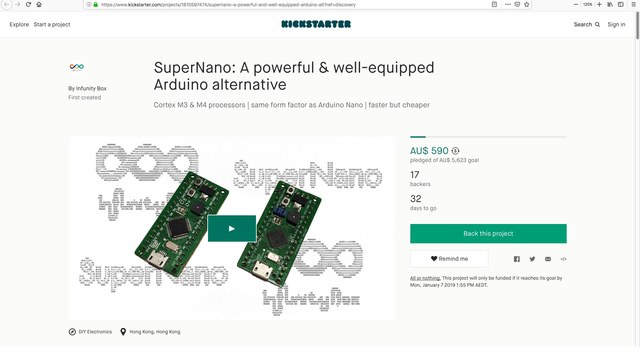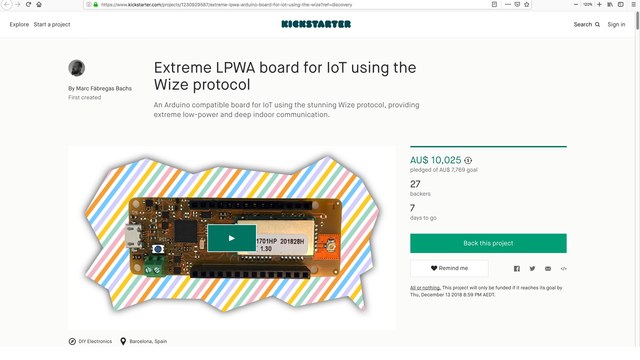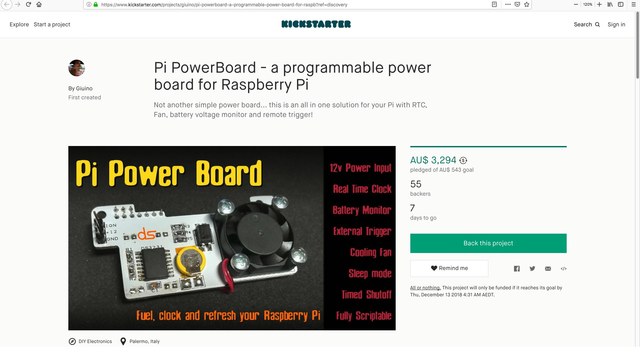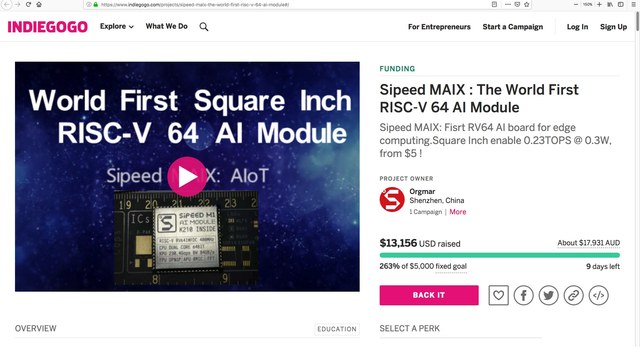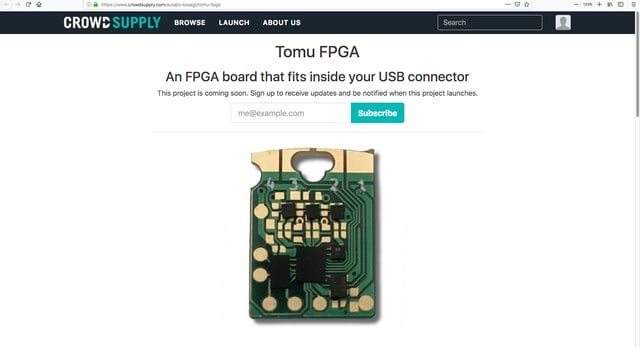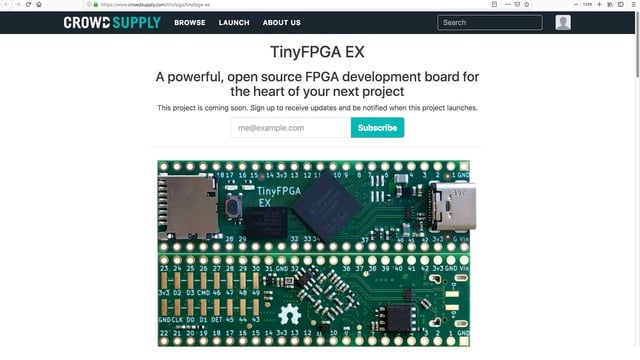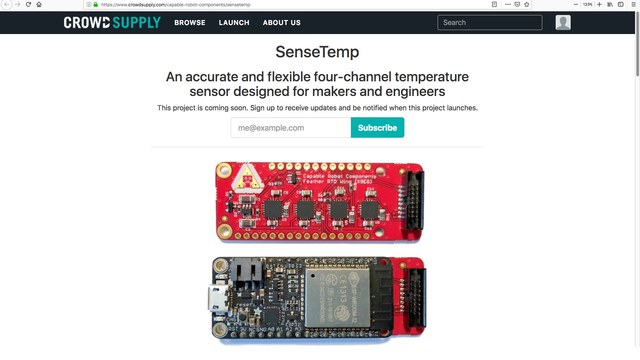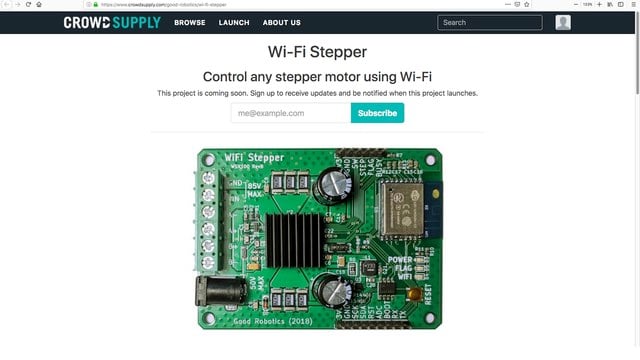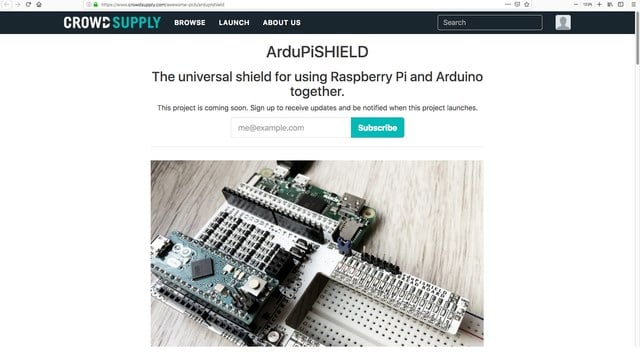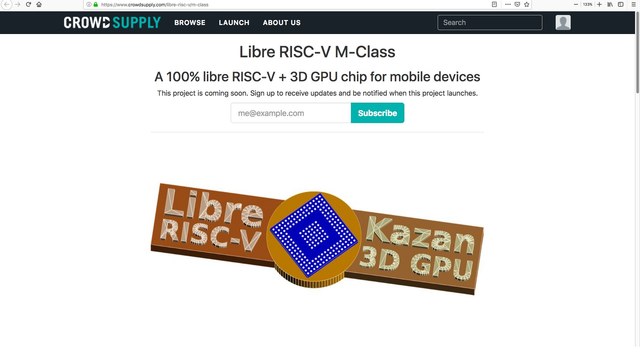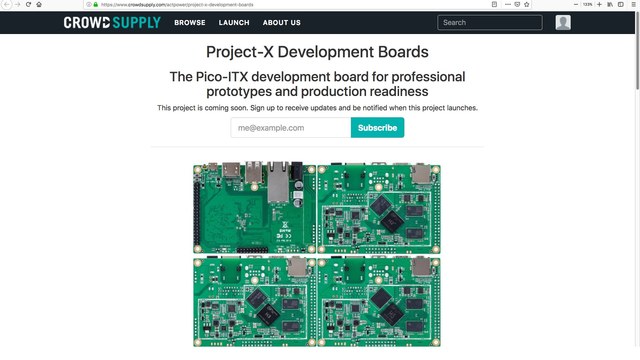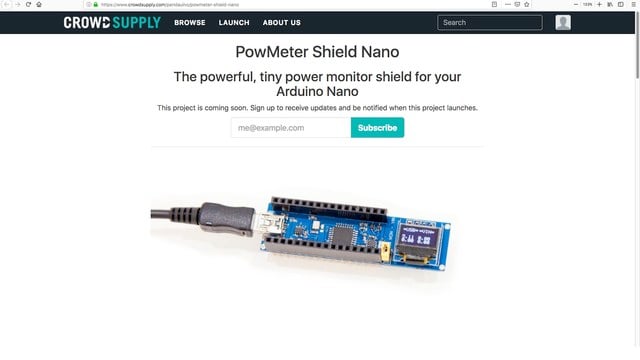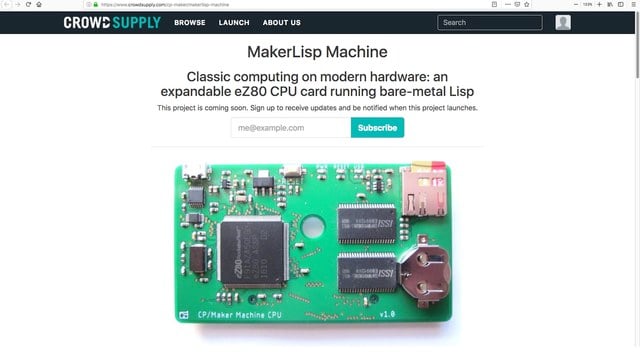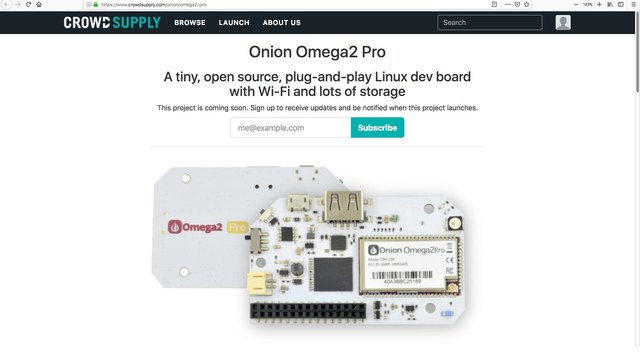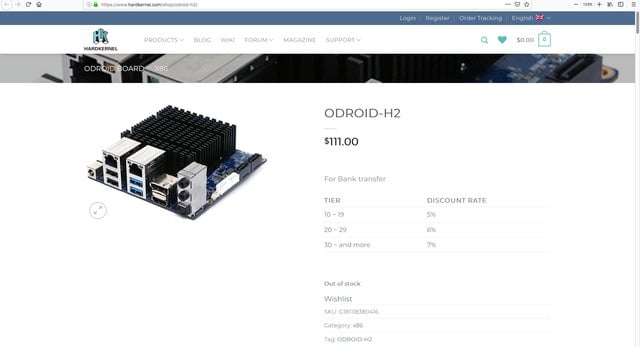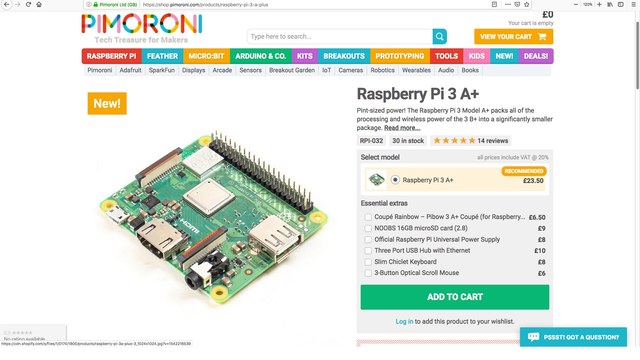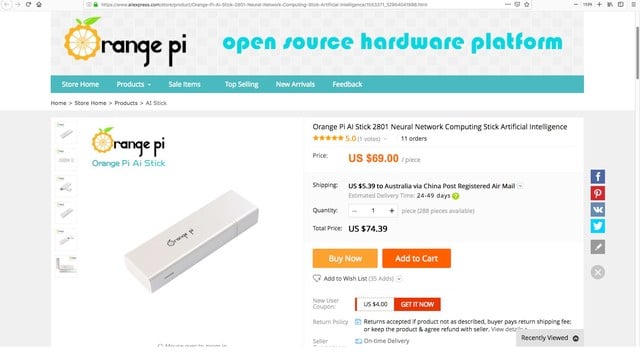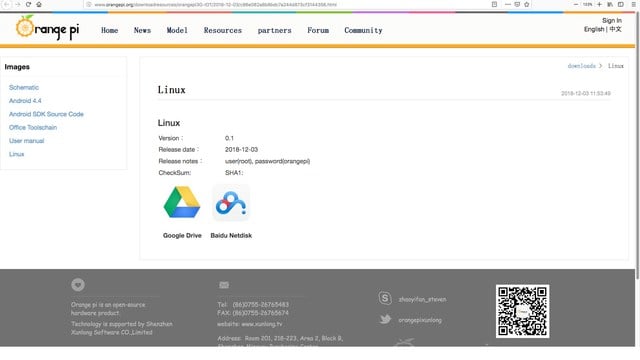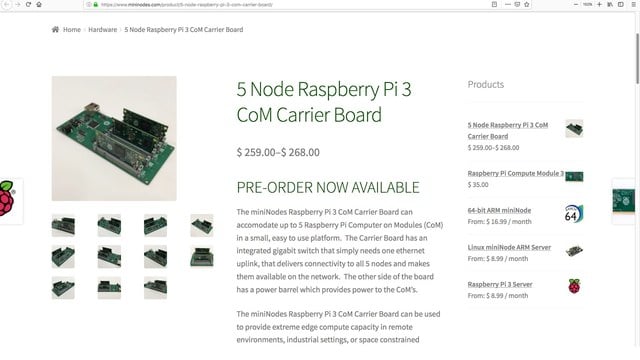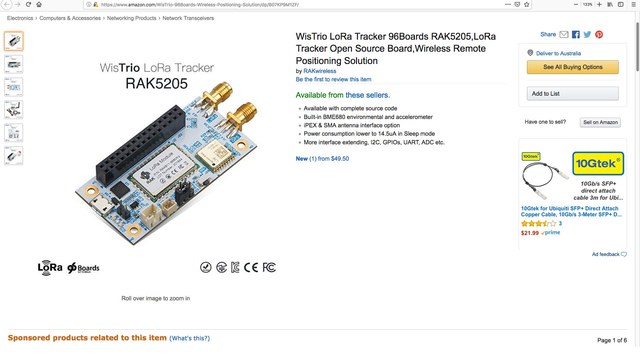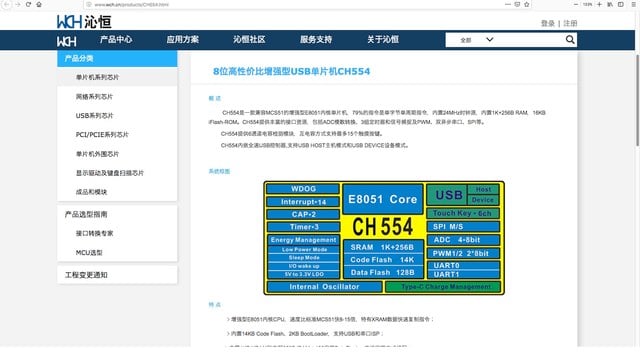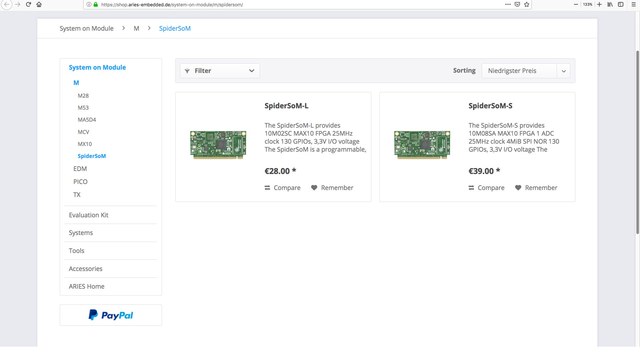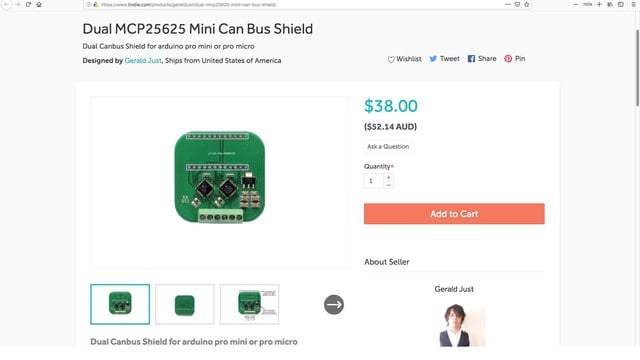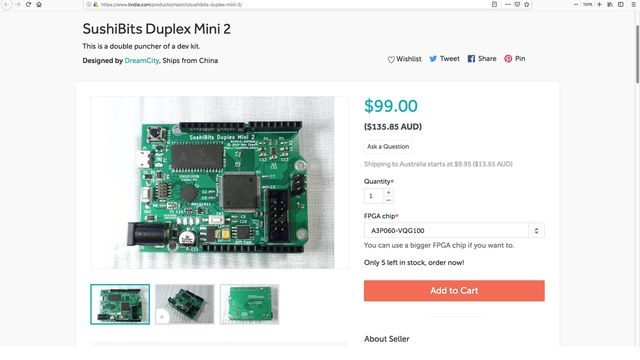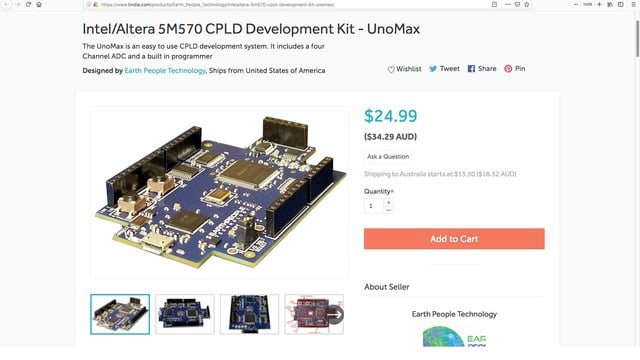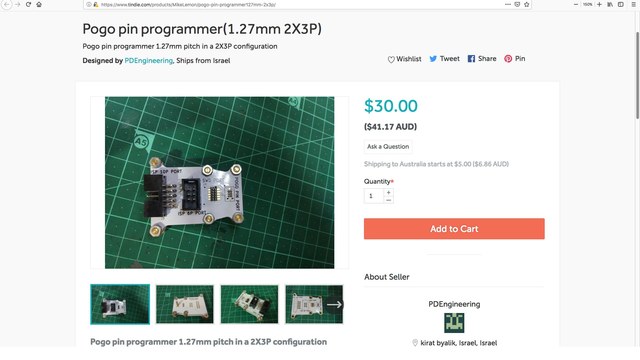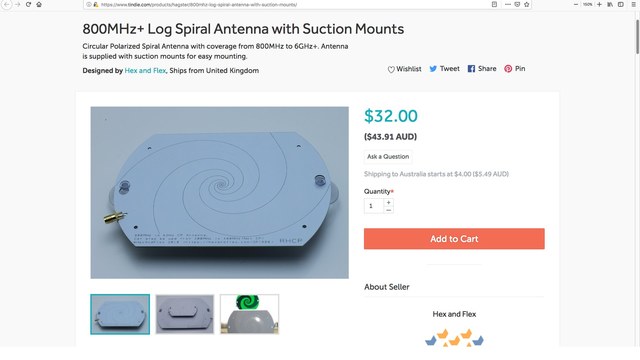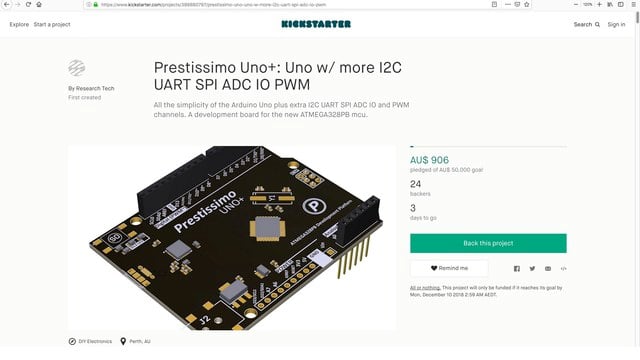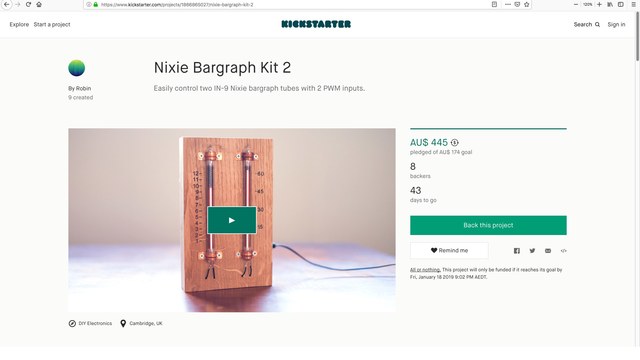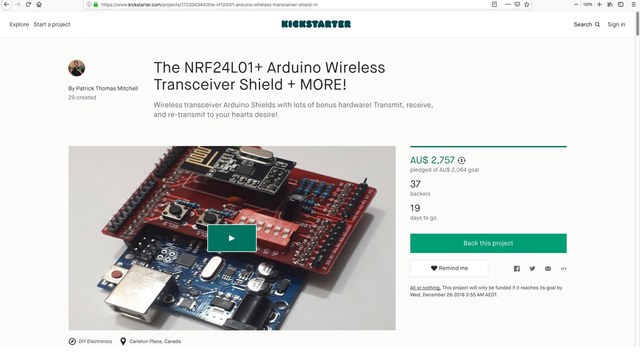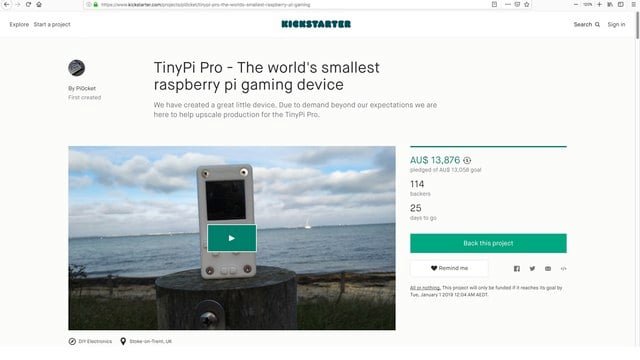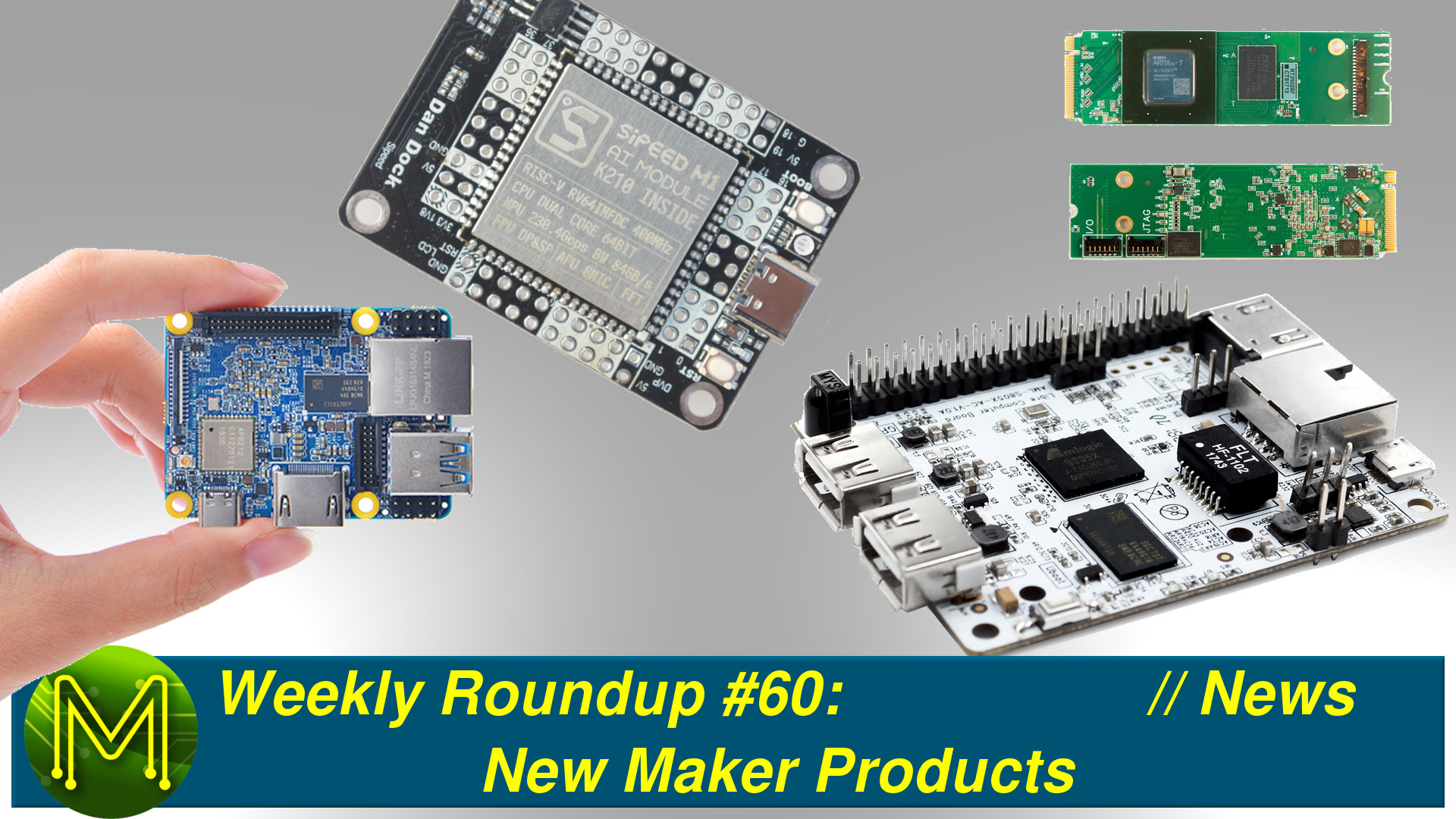Weekly Roundup #61: New Maker Products // News
Watch "Weekly Roundup #61: New Maker Products // News" on YouTube.
This week’s Weekly Roundup, which hasn’t really been weekly for the past month, we’re seeing a fair amount of retro kit, FPGAs and SBCs. Basically a whole lot of stuff that is really cool that you didn’t know you needed.
ERROR:not .src - map[alt: class: control: ctx:0xc00c251ae0 height: href: id:VX0U6HhrXQg inline: size: span: src: style: thumbnail: title: width: xml:]
Crowd Funding
KickStarter
First up on Kickstarter …
Zero BZ1
… there’s yet another SAMD21 based breakout board. It’s very similar to AdaFruit’s feather breaking out all the same GPIOs, but this one can not only charge LiPos from the USB port, but from a 6v solar cell.SuperNano
If the standard Microchip lineup of MCUs isn’t powerful enough for you, then you can always make the switch to STMicro STM32 MCUs. The SuperNano is a campaign for yet another Arduino compatible breakout board, but using two different STM32 MCUs. The SuperNano Plus runs the Cortex M4, STM32F401 and the SuperNano base model runs the STM32F103. These MCUs are fairly similar to Microchip’s ATSAM3X and ATSAMD51 series, but come in slightly cheaper. If you want to get into STM32s, then this looks pretty good.Hybo iLidar
LiDAR is a technology that’s been used for decades, but it’s always been far too expensive for Makers to use in projects. The Hybo iLidar claims to be provide a a fully functioning LiDAR for only US$99. It uses a slightly different method of mapping, by using a line laser and fisheye camera scanning in the vertical axis. It can map 3D data from 15cm to 6m with a 180 degree FOV at up to 100Hz and pull the data over USB, SPI or I2C. It’s a very different approach to LiDAR and will be interesting to see how it goes in real-world tests.AllWize K2
The AllWize K2 is yet another wireless breakout board, but is based on the Wize protocol. Wize is a competitor to other low-power wireless protocols such as LoRa, SigFox and NB-IoT. It’s not a new technology as it’s been around for more than a decade and claims to have better radio penetration and longer battery life running off the old pager frequency. This board provides you everything to start using Wize with SAMD21 and GPIO headers. It’s a bit expensive, but if you want a 20 year battery life, might be the thing to use.Pi PowerBoard
The Pi PowerBoard is yet another power supply board for your Raspberry Pi, but this one has an onboard RTC, PWM fan, and battery voltage monitoring running off a 12v DC input.USB power supply
The siru.box is something for your toolbox. It’s a USB based DC buck/boost converter providing a 0 to 15v DC output at up to 600mA. You can adjust both voltage and current limiting from a plain web interface. So, no software installation required, but comes with some Python example scripts if you really want to code.IndieGoGo
Over at IndieGoGo, they actually have something interesting this time.
Sipeed MAIX
The Sipeed Maix is a tiny SBC based on the 64bit, 800MHz Kendryte K210 SoC. This is a pretty interesting SoC that includes a neural network and audio processor supporting 8 mics at 192KHz, Field Programmable IO Array, 8MB RAM and ROM. Pretty unusual chip. The board also has SD slot, SPI flash, RGB888 LCD, DVP camera, USB Type C for UART and power and breaking out 48 GPIOs. The best thing? You can get all this for only US$6 from their IndieGoGo campaign. I have to apologize to all my subs… this is one that looks too cool to pass up.Crowd Supply
Tomu FPGA
Back in Weekly Roundup #49 we saw the tiny SAMD21 based Tomu, which fitted completely within a USB port. Well, now it’s back with an FPGA version. The Tomu FPGA uses the popular iCE40 FPGA, which has enough logic cells to implement a RISC-V CPU. So this is probably the smallest SBC around. You also get 2MB flash, RGB LED and capacitive touch pads.TinyFPGA EX
Luke Valenty, the creator of the ever popular TinyFPGA is about to release the EX version. Designed around three different flavours of the Lattice ECP5 FPGA, the board also has 128Mbit SPI flash, 64Mbit HyperRAM, SD slot and USB Type C connector. This is a step up from the previous BX and AX boards and will be interesting to see what people do with it.SenseTemp
The SenseTemp is a PCB that has four MAX31865 RTD based temperature sensors. Designed to run off an AdaFruit feather, it’ll provide a temperature reading accuracy of +/- .15C, from -50 to 260 degrees from 4 probes.Wi-Fi Stepper
The WiFi Stepper is yet another stepper control board, but this one is… well WiFi based. Running an ESP8266 as well as an ATECC508A crypto engine - access is, of course, over WiFi, but you can also control it over UART and I2C. It can drive stepper motors up to 85V at 10A with two different modes of operation giving you either 1/16 microstepping with high hold torque, or 1/128th microstepping with low noise. It also offers power and motion profiles, thermal shutdown, under and over voltage and current limiting.ArduPiSHIELD
Way back in Weekly Roundup #25, we saw the ArduShield on Tindie. Now there’s the ArduPiShield up on pre-launch which combines both an Arduino shield and Raspberry Pi header for breadboarding. It also has a socket for OLED display, ESP8266, silkscreen labels and other features making it a pretty universal board.Libre RISC-V M-Class
Sick and tired of badly supported graphics on SBCs? The Libre RISC-V M-Class SoC is looking to address that. It not only provides a low-powered 64bit quad-core CPU running at 800MHz, but a Kazan GPU core. The performance target for the GPU will be 1280x720 at 25FPS at 5-6 GFLOPs. So, not a hugely performing GPU, but the advantage is that it’s all libre-licensed, so support should be much better than any commercial offering. This is one to watch.Project-X Development Boards
Project-X are a set of boards in Pico-ITX form factor with a choice of three different AllWinner SoCs; the H2+, H3 and H5. All three boards also have eMMC, SPI flash bootloader, 12v DC supply and breaking out somewhat Pi compatible header, GbE, HDMI, and USB ports. It also has an expansion header that provides other planned modules, such as PoE and I/O expansion.PowMeter Shield Nano
If you’re wondering how much power your Arduino Nano is using, then the PowMeter Nano will be able to tell you. Powered from standard USB it can measure from 0 to 500mA at 0.1mA resolution from USB and 0 to 4A from VIN at 0.5mA resolution. Voltage measurements are from 0 to 24v and 10mV resolution. You can see the current and voltage levels from the inbuilt OLED or via I2C.MakerLisp Machine
Another one for all those retro heads out there. The MakerLisp Machine has the eZ80 CPU running at a whopping 50MHz, as well as 256KB flash, 1Mb RAM, RTC, SD card, USB UART bridge and an expansion header for VGA, keyboard and other cool things planned. Looks pretty cool.Onion Omega2 Pro
For those people who thought the Omega Onion was dead, they are still going. Here’s a pre-launch for the Omega2 Pro. What makes this model the pro? The Pro has increased memory to 8GB flash and 512MB RAM, and the board also has USB to serial bridge, USB host, LiPo charging, button, LED and thankfully a proper 2.54mm spaced GPIO header. Finally, they’ve gone and fixed all the power and connectivity issues that have plagued the original Omega.Honorable mentions
ODROID-H2
There’s been a lot of talk about the new ODROID-H2 but you can finally pick one up from HardKernel’s store for only US$111. What makes this SBC different is that it’s really a PC in an SBC form factor. Not only does it run the quad-core Intel Celeron J4105 at 2.3GHz, but has dual-channel DDR4 SODIMM RAM slots supporting up to 32G, M.2 PCIe slot, 2 SATA 3.0, eMMC, USB3.0, USB2.0, dual GbE, audio in/out, HDMI and DisplayPort. Both displays are capable of supporting 4K at 60Hz. You can power the board from 14 to 20v at 4A on a DC jack. So requires a bit of juice, but heck for that price that’s it’s a pretty decent bang-for-your-buck. Sorry again to all those people who have blown their budget because of this video.Raspberry Pi 3 Model A+
And if you have been living under a rock the last month, or just really really busy like I have been, then you might have missed possibly the last Raspberry Pi to have a minor update… Maybe… The Raspberry Pi 3 A+ returns to the original Pi’s form factor, but maintains the same SOC - the BCM2837B0. This new model keeps the SD slot, HDMI, MIPI CSI and DSI, WiFi, Bluetooth… really everything is kept except memory is reduced to 512MB, removes GbE and you only have USB port. Word on the street is that they also improved thermal management and USB mass storage booting.Orange Pi AI Stick 2801
Over at Orange Pi land, they have departed slightly from releasing yet another SBC and instead come out with a neural network compute stick for facial and voice recognition. The Orange Pi AI Stick 2801 runs an SPR2801S Lightspeeur processor - Who the heck came up with that name? Anyway, it’s a pretty grunty processor. The stick also has eMMC, USB 3.0, and draws 300mA, which is pretty decent. Note that this is for the hardware only. The SDK and training tool will cost more… Of course.Orange Pi 3G-IoT Linux image
The Orange Pi guys have also finally released an official Linux image for it’s 3G IoT SBC. Took them a while, but obviously they were busy doing other things. So, now you don’t have to just rely on Android.MiniNodes Raspberry Pi 3 CoM Carrier Board
If you’re in to clustering, then Mininodes has just released a carrier board that can run 5 Pi 3 compute modules. It powers all the modules from a DC jack and also has a GbE switch and RJ45 socket for network. It’s pretty expensive at US$260, but it’s the only 5 socket carrier board I’ve seen so far.Wistrio LoRa Tracker RK5205
Over at Rak Wireless, they’ve released a LoRa based GPS tracker called the Wistrio. Not only does it use the RAK5205 LoRa module, but an STM32, Quectel L76 supporting GPS, accelerometer and environmental sensors, LiPo battery charging, 30 pin GPIO header and a full LoRaWAN stack. For US$50, it’s a fairly complete unit for things like vehicle tracking.25c CH554 micro
Over at HackADay, they pointed out the CH554 micro, which is a 25c part based on the 8051. The cool thing about this part is that there’s a lot of effort getting OpenSource development tools going for it. There’s currently a port running on Windows and Linux and it seems to be fairly well featured so far with a few bits missing still.SpiderSoM FPGA
SpiderSoM is a SoM based board that runs the Intel MAX10 FPGA. This is a pretty interesting board that also has up to 512MB DDR3 RAM, 4MB SPI flash, 4GB eMMC, RTC, PMIC and LiPo charging. You also get a 230 pin edge connector with 178 GPIOs supporting 13 LVDS transmitters and 54 receivers. If you want to be able to access all those GPIOs, then you can get the carrier board which breaks out a USB port, 4 PMOD connectors, Arduino headers, JTAG, a few buttons to mash and prototyping area. This is a pretty grunty little FPGA board.SAM R34/R35 Lora MCU
Not to be left in the dark, Microchip have just recently announced a new MCU aimed at wireless networks. The new SAMR34 and R35 series has the same SAMD21 core with all its GPIOs, but also beefs up the flash to 256KB and adds in a LoRa module with a full LoRaWAN stack. It’s considerably smaller than the existing RN2903A module, but also capable of supporting multiple regions. So, it’s a design once - support many thing which reduces overall cost of products.Maker Shops
Tindie
Over at my favourite website, Tindie, there’s a bunch of interesting things.
TLC5947 LED driver breakout
You can pick up a TLC5947 breakout board, which is a constant current LED driver, providing 12bit PWM control over 24 LED channels. It uses an almost similar SPI interface. Enough for it not to be a problem, but are daisy chain-able, so you can theoretically chain as many as you want.Dual MCP25625 can bus
The MCP25625 is a pretty decent CAN bus transceiver. This one has two of them onboard as well as an Arduino Mini header, screw terminals and regulator. Good for being able to send and transmit at the same time.SushiBits Duplex Mini 2
SuchiBits Duplex Mini 2 is another FPGA board. This one has the not-so-common Microsemi ProASIC3 FPGA as well as an STM32F103, 512KB RAM, 16MB SPI flash and Arduino headers. A pretty decent board using a not so common FPGA.Intel/Altera 5M570 CPLD dev kit
CPLDs are fairly similar to FPGAs, but they are miles apart in terms of functionality. As opposed to FPGAs, they usually have internal flash, start immediately and their logic functions don’t rely on lookup tables. Oh, and they are generally cheaper than FPGAs. Here’s a board based on an Altera 5M570 CPLD in a handy Arduino form factor. Has 24 GPIOs, with 4 channel ADC capable of 300ksps, USB to UART bridge and a few buttons to mash.Pogo pin programmer
If you have a few boards to program, then here’s a handy pogo pin programmer with 1.27mm pitch pogos and several headers supporting various programmers.Altair-Duino
Ever since the RC2014 meetup the other week, I’ve been impressed at how far the retro scene has come. Here’s an Altair 8800 computer system. A little expensive, but a heck of a lot of work has been put into it, so well justified. Runs 512KB RAM and stores software on micro SD as simulated floppy and hard disk storage.Log Spiral Antenna
If you’re struggling to find space for that GPS antenna, then a good solution is to use a spiral log antenna. These sorts of antennas have been used by the military for years as a way of reducing antenna bulk. If you face the antenna one way, it becomes Left Hand Polarized. Face it the other way and it is Right Hand Polarized. If you haven’t the foggiest idea what I just said, then here’s a bit of light reading, and also here, here and here. Or else, in summary, if you want to increase GPS reception without a bulky antenna, then get one of these.Honorable mentions
A few bits and pieces that I didn’t include in my video.

